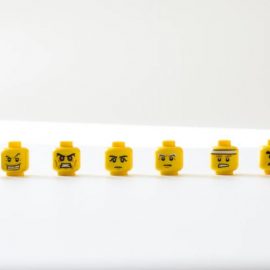

This article is an excerpt from the Shortform book guide to "Why Does He Do That?" by Lundy Bancroft. Shortform has the world's best summaries and analyses of books you should be reading.
Like this article? Sign up for a free trial here.
What is considered domestic abuse? Is abuse deliberate?
Lundy Bancroft’s book Why Does He Do That? explains why some men abuse their partners and defines domestic abuse. According to his definition, domestic abuse is more complex than many people think.
Keep reading to learn what domestic abuse actually means.
Defining Abuse
What is considered domestic abuse? Bancroft defines abuse as controlling, angry, and violent behavior committed by a man against his partner. He defines abusers as men who have an ongoing pattern of mistreating their partner either verbally, physically, sexually, or with a combination of the three. Verbal abuse involves insults, threats, and raising your voice; physical abuse involves physical violence and destroying objects; and sexual abuse involves any unwanted sexual contact or language.
While nobody knows exactly what causes people to be abusive, Bancroft stresses that abuse is deliberate; that is, it’s a behavior that the abuser does on purpose because it benefits him. By mistreating his partner, the abuser gains more power over her, making it easier for him to vent his negative emotions and force her to perform whatever physical, emotional, or sexual services he demands.
Dehumanization vs. Abuse
By emphasizing abusers’ choices and awareness of the harm that they do, Bancroft is arguing against the perception of abuse as something purely irrational and impossible to control. On the contrary, abuse makes perfect sense from the abuser’s perspective because he values his own convenience over the well-being of his partner.
Psychologist Paul Bloom echoes Bancroft in his argument that extreme violence against a vulnerable person or group—up to and including genocide—doesn’t stem from an inability to recognize others’ humanity, but a willingness to harm other people to achieve certain goals. Insults, beatings, assaults, and murder are used to enforce social hierarchies that benefit the perpetrators at the expense of the victims. For example, in the wake of desegregation in the 1960s, racist agitators would harass and attack Black students not because they saw the students as less than human, but in an attempt to force them away from the schools they had a legal right to attend.
Myths About Abuse
According to Bancroft, talking about abuse is made more difficult by the fact that not many people who work with abusers and their victims recognize that being abusive is a choice. Certain myths about abuse—that abusers are simply “crazy,” that abuse is caused by addiction, that abuse is a problem specific to a particular class or community, and so on—not only fail to protect victims, but actually help abusers by providing covers for their behavior.
(Shortform note: In recent years, mental health experts have pushed back against using the word “crazy” to describe perpetrators of violence, be they abusive men, mass shooters, or political leaders. Critics argue that calling these people “crazy” obscures the fact that most know full well the consequences of their actions and undertake them purposefully, either because they enjoy hurting others or expect to benefit from doing so. In addition, using “crazy” as a derogatory term is harmful to nonviolent mentally ill people, unfairly associating them with crime or abuse.)
Recognizing Abusive Behavior
Having defined abuse as deliberate mistreatment, Bancroft spends much of the book providing specific examples of what abuse looks like in practice. While abuse is often divided into categories based on the tactics used—verbal versus physical versus sexual—Bancroft argues that most abusers use all of these tactics to different degrees and at different times, depending on what they feel most comfortable with or what gets the “best” results. Bancroft instead breaks his examples up by their intent: manipulation or intimidation.
Manipulation
Manipulation, mainly involving verbal and emotional abuse, persuades the victim to doubt her own thoughts, feelings, and opinions in favor of accepting whatever the abuser wants her to believe or do. An abuser uses manipulation to make the victim more emotionally dependent on and willing to cede control of the relationship to him. Some common manipulative tactics Bancroft describes include constant bullying and insults, which break down the victim’s self-esteem; “love bombing” her with time and attention early in the relationship and then abruptly withdrawing it; and shutting down any attempts at argument.
Intimidation
Intimidation, mainly involving verbal and physical abuse, forces the victim to comply with the abuser’s demands through actual or threatened violence. Abusers use intimidation to terrorize the victim into obeying them and keeping silent about the abuse. Some common intimidation tactics Bancroft describes include physical violence, threatening to hurt the victim or her loved ones, and falsely accusing the victim of infidelity. An abuser may also demand to know where the victim is at all times so he has constant access to her, or he may sabotage her finances to make her increasingly dependent on him.
Rather than relying on one approach or the other, abusers will regularly switch between them. Bancroft suggests that this constant switching is itself a tactic of control; by playing “hot and cold,” the abuser keeps his victim constantly on edge as to which version of her partner she’ll come home to. The intimidation feels more frightening for being sudden, while the manipulation feels like a relaxing of tension and thus a relief.

———End of Preview———
Like what you just read? Read the rest of the world's best book summary and analysis of Lundy Bancroft's "Why Does He Do That?" at Shortform.
Here's what you'll find in our full Why Does He Do That? summary:
- A guide to how abusive men think
- Ways that abuse victims can better defend themselves
- A breakdown of the four most common myths about abuse






